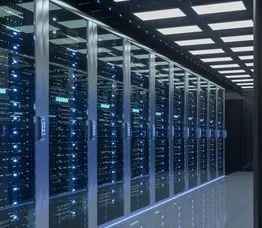Are you looking for something different in your data center network?

Before almost every meaningful market change, there are signs.
A few well-known examples: Amazon showed strength in books before becoming a titan of retail; Apple simplified user experience with the iPod before defining the smart phone era; and machines were able to beat humans in strategy games well before the most recent AI buzz.
There are always signs. You just need to know where to look.
So are there any signs that Nokia is up to something different in data center networking?
It's been a year of progress. Have a look at what we've been up to, and then you tell me.
Human error zero as our mission
We codified our mission in the data center to be human error zero. There are two sources of human error in networks: 1) vendors (software bugs, hardware issues) and 2) users (misconfigurations, operational miscues).
Our mission is to drive both of these to zero. We offer the highest-quality data center hardware and software in the market, and our operations platform is expressly designed to eradicate mistakes.
Multivendor, intent-based network operations assure reliability
Networking is hard. Not sure about that? Consider this: what time of year are networks most stable?
Did you guess the holidays? You're right.
Our industry has worked hard to create a discipline where everything works best when people stop touching it. In September, Nokia introduced Event-Driven Automation (EDA) our solution to this problem.
Nokia EDA (pronounced ee-dah) is our data center operations platform. With human error zero as the goal, our users start with defining what a data center looks like, and then EDA translates that intent into underlying configuration. The result is a model-driven approach to management, with a rich set of pre-production checks, featuring a digital twin. As it turns out, when you deliver reliable operations, the natural byproducts are speed and efficiency. And with a rich, well-defined API set, EDA also helps you on your next steps to workflow automation.
GenAI assistant for the data center helps new users
GenAI assistants are now appearing all around us—from how you interact with your phone, to how you receive customer service, to your healthcare.
This past fall, Nokia was first to market with a GenAI assistant for IP routers and data center switches. With the SR Linux AI Assistant, networking teams benefit in key use cases, including an easy way to browse documentation, check device and network state, troubleshoot issues and query configuration examples.
Kyndryl and Nokia team up for change
The hardest part of change is... well, the change. As companies grapple with their future, they have to navigate more than just technology. Process, tooling and people play a large role in how folks operate. And sometimes companies need a little help with bringing all the different pieces together.
This year, we announced an expanded partnership with Kyndryl aimed at converting aspiration into reality in customer environments. Kyndryl's expertise for integrating technologies and facilitating transformations combined with Nokia's data center portfolio makes for a compelling path forward for anyone who thinks the future is not just another rev of the past.
Lenovo and Nokia join forces for AI deployments
Artificial intelligence is a team sport. It requires compute, storage and networking to come together. And we could not ask for a better partner to provide a full-stack solution than our new Lenovo partnership to tackle AI.
Together, we are offering validated designs across the full technology spectrum, along with a global presence and a real practitioner's view of how to deploy technology at scale.
SONiC support offers flexibliity
At Nokia, we are committed to giving customers choice and flexibility. In December, we announced support for SONiC on our hardware platforms. With operational support for both our flagship operating system SR Linux and for SONiC, we are providing customers the platforms and software required to pursue whichever technology path best fits their business.
Customers choose Nokia
Nokia wins... and wins... and wins--It's been a good year of validation for Nokia data center. We had key customers validate our quality-first approach to networking. And they weren't inconsequential. In September, we announced our commercial progress at CoreWeave. In November, we announced Microsoft's 5-year commitment to Nokia data center with SONiC. And in December, AI player Nscale announced that they were using Nokia switches with Lenovo servers and storage to deliver their AI solutions.
The recurring theme? When reliability matters, Nokia's data center portfolio has a role to play.
Next steps help your evaluation
Take the next steps for you and your team by trying out the Nokia SR Linux container image available to everyone for free—no registrations, no paywalls.
Then start using the free Containerlab to put everything together, including software from other vendors. Data center architects and operators are recommending Containerlab to their friends for building complex virtual test labs for all vendors and getting results, such as:
-
“Subsequent lab setup time reduced dramatically for us by up to 80 percent”
-
“Using Containerlab during continuous integration (CI) regression testing, we are finding regressions 50 percent faster.”
Summing it up
New products. New partners. New wins. Next steps. Before major inflections, there are always signs. You just have to know where to look.






